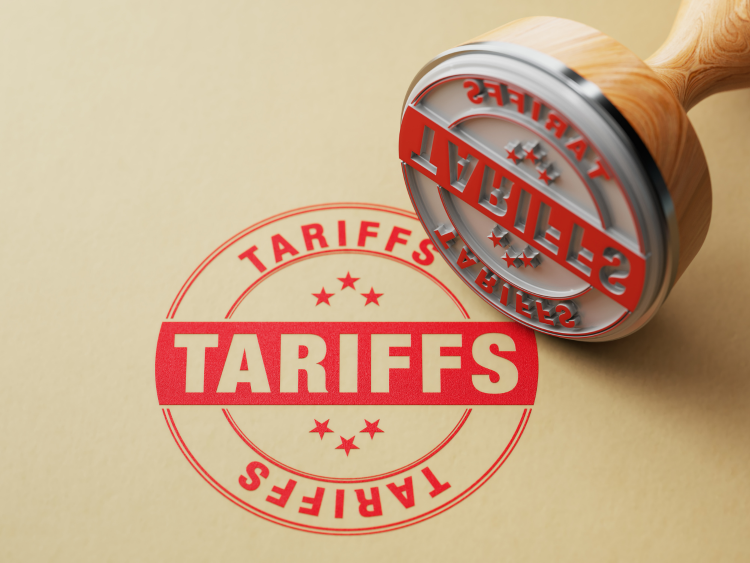Steel Products

Leibowitz: Work Globally to Cut Overproduction or Undercut U.S. Manufacturing
Written by Tim Triplett
July 11, 2017
Editor’s note: The opinions expressed here are those of trade attorney Lewis Leibowitz and do not necessarily reflect those of Steel Market Update. There will be more discussion about trade, trade suits and Section 232 in our upcoming SMU Steel Summit Conference, which will include presentations by Leibowitz and others on both sides of the trade debate.
Steel is in the forefront of foreign and economic policy once again. The country awaits a decision from the president about restricting steel imports into the United States to protect domestic steel producers. The decision, expected before now, has been delayed in part at least because of controversy within the administration about whether import restrictions would do more harm than good.
![]() Former Governor and Secretary of Homeland Security Tom Ridge recently wrote an opinion piece that called on the president to support import barriers on foreign steel. The reason Governor Ridge’s advice is very bad is inherent in what Governor Ridge did not mention—the impact of steel import restrictions on millions of American consumers and workers. Higher steel prices will mean that American manufacturers who use steel will become less competitive.
Former Governor and Secretary of Homeland Security Tom Ridge recently wrote an opinion piece that called on the president to support import barriers on foreign steel. The reason Governor Ridge’s advice is very bad is inherent in what Governor Ridge did not mention—the impact of steel import restrictions on millions of American consumers and workers. Higher steel prices will mean that American manufacturers who use steel will become less competitive.
While Governor Ridge mentioned only China and Russia as sources of the U.S. industry’s difficulties, the steel industry plainly wants import restrictions on nearly all foreign sources. Their goal is to increase prices in the United States for steel. That will necessarily make products containing steel more expensive. Inevitably, demand for steel in the U.S. will fall, leading to agitation for restrictions on imports of steel-containing products, as well. Protectionism breeds protectionism.
None of these developments will enhance U.S. security. Steel is only relevant to national security because of what steel users make from it. The ships and armored vehicles needed by the military are not made by steel mills, but by downstream manufacturers. And, far more U.S. jobs will be negatively affected by increased steel costs than even losing U.S. steel manufacturing altogether.
Clearly, steel (and aluminum) are in difficulty because of global overproduction. China is at the center of this problem due to its fantastic expansion of Chinese production of these products over the last 15 years. Bringing steel demand and supply into balance requires global, not unilateral, action. Import restrictions would cut supply in the United States and raise domestic prices. Without cutting global production, these price increases will not only be temporary but destructive of U.S. industry. A global steel conference must handle these issues. Just this past weekend, the G20 group of industrialized nations gave a renewed boost to global efforts to cut production.
The domestic steel industry argues that U.S. import restrictions will cause China to get serious about production cuts. This assertion is unsupported and illogical. If the U.S. goes it alone, the prospects for meaningful cuts in global capacity will certainly lessen and possibly die altogether. China has already been relegated to a minor market presence in the U.S. Import restrictions will not penalize China, but friends and allies like Canada, Mexico, Japan and Germany. Global cooperation in solving this global problem will evaporate as U.S. trading partners challenge U.S. import restrictions rather than working together to solve this global problem.
The Trump administration needs to choose effective action to address global overproduction over short-term and unsustainable protectionism.

Tim Triplett
Read more from Tim TriplettLatest in Steel Products

CRU: US stainless prices to rise on expanded S232 tariffs
Stainless prices in the US market will rise, following price increases by major US producers. Our base case scenario incorporates higher US prices in the near term, despite the initial negative reaction by the market. US stainless prices will go up in 2025 H2 and will stay elevated in 2026 as tariffs on stainless […]

Galvanized steel demand unsteady amid lingering buyer fatigue: HARDI
Uneven demand for galvanized steel in June reflects a market that remains mired in uncertainty, according to industry sources.

OCTG industry salutes Customs for catching trade crooks
The US OCTG Manufacturers Association is commending US Customs for intercepting another Thai company's attempt to illegally transship Chinese oil pipe to the US.

Whirlpool says tariffs will bolster business
“Economically, the business case for products made in the us has become a lot more attractive," the CEO told Fox Business.

Worthington Enterprises buys Elgen Manufacturing
Worthington Enterprises acquires HVAC products maker Elgen Manufacturing.
